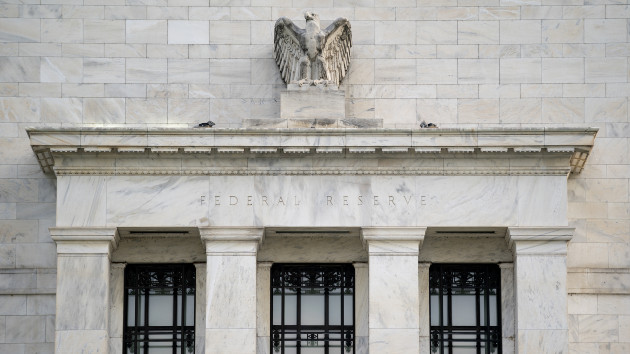(WASHINGTON) — Washington, D.C., and Wall Street will closely watch an announcement from the Federal Reserve on Wednesday about whether to shift its benchmark interest rate.
The move marks the first such decision since the Fed said last month that it expects to cut rates in 2024.
Economists expect the Fed to leave rates unchanged, delaying rate cuts until later in the year. The next opportunity for a rate move will take place at a meeting in March.
An aggressive series of rate hikes since last year has spurred an increase in borrowing costs for everything from mortgages to credit cards to auto loans. But the Fed has signaled that it plans to ease rates in response to falling inflation.
The rate decision is set to arrive days after fresh data showed that the U.S. economy cooled in its latest quarter but performed much better than forecasters expected, boosting optimism about the nation’s prospects for averting a recession.
Gross domestic product, adjusted for inflation, grew at a 3.3% annual rate over the final three months of last year, according to data from the U.S. Commerce Department.
The resilient economic performance could relieve some pressure on the Fed to move quickly toward rate cuts.
Interest rate cuts would lower borrowing costs for consumers and businesses, potentially triggering a burst of economic activity through greater household spending and company investment.
But the Fed risks a rebound of inflation if it cuts interest rates too quickly, since stronger consumer demand could lead to an acceleration of price increases.
Federal Reserve Governor Christopher Waller said earlier this month that the central bank expects to cut rates this year, but it won’t be “rushed” to make the decision soon.
The GDP data, widely viewed as the prevailing measure of a nation’s economic health, comes amid a flurry of positive indicators.
A jobs report earlier this month showed hiring in December remained robust and far surpassed expectations.
Still, inflation remains elevated. Inflation has fallen significantly from its peak of 9% last year but in recent months has encountered bumps in its path toward normal levels.
The pace of price increases stands more than a percentage point higher than the Fed’s target rate of 2%.
Those remarks helped send treasury yields soaring and major stock indexes tumbling. Since then, however, the stock market has moved steadily upward.
The Dow Jones Industrial Average closed above 38,000 for the first time last week, setting a record high. Since then, the index has ticked up more than a percentage point.
The recent surge follows a stellar showing for markets in 2023, driven in large part by optimism about the prospects for a “soft landing,” in which inflation comes down to normal levels while the economy avoids a recession.
The International Monetary Fund released a forecast on Tuesday voicing its expectation of a soft landing for the U.S. The U.S. will expand at an annual rate of 2.5% this year, the IMF said, predicting a slowdown from the previous year but an improved outlook from a prior forecast.
Copyright © 2024, ABC Audio. All rights reserved.












